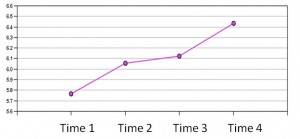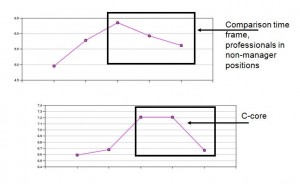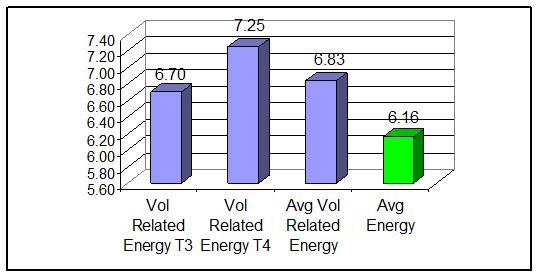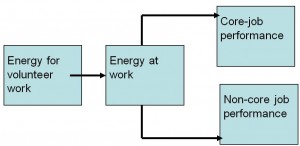Company-sponsored volunteerism is popular, and the public relations departments in most organizations are supportive of these efforts. However, many managers, executives, and even HR professionals wonder what the payoff is to the organization.
At face value, two things are true:
- Volunteerism in the community “feels” like the right thing to do; it supports many firms’ values statements, missions and their commitment to organizational sustainability; and,
- Volunteerism takes time away from work.
Given point #2, one wonders what the real payoff is to the organization when employees leave work to volunteer in non-work related activity? We set out to answer this question in partnership with a New York City-based not-for-profit.
This particular organization works with many large firms based out of the City. Thirty seven (37) firms were part of the research project. Each of the 37 companies recruited employees to participate in a volunteer program that necessitated employees take some time off from work to help with the effort.
How we studied volunteerism in 37 NYC organizations
We worked directly with the volunteer organization and they provided us with information on the volunteers, even though they came from 37 different companies. We conducted four short pulse surveys during the period of time the individuals volunteered. A total of 433 people provided us with data (this represents 53 percent of the total volunteers).
We examined the 433 people vs. the entire sample to determine if there were any significant differences, and we concluded that we were able to attract a representative sample via the surveys. Thus, there was no one company or demographic group (e.g. age, job level, job type) that over represented or that was under represented by the data.
In each pulse survey, we asked employees about their energy at work. We do this because we have studies that validate energy as a measure that is directly predictive of individual, team and firm performance.
Thus, although the survey is short and easy to administer, it provides data on how performance at work is affected by the intervention being studied (in this case, volunteerism). Figure 1 shows the energy trend data (over a 6-month period of time) from the period of time when they started the volunteer work to the end of the project.

Unfortunately, we did not have a control group from each organization for the period of time studied. However, we do have access to the Leadership Pulse data. This is a survey we conduct with a large sample of professionals.
Energy Pulse™ at work
Below are two demographics for sample comparisons. As you can see, during the same time frame, the overall Leadership Pulse sample shows a decrease in energy. Thus, although not a perfect comparison, it does provide evidence that the volunteer experience is unique.
By way of background, the energy pulse question uses the color-coded energy scale (below), and employees are asked to rate their current energy level, the energy level where they are most productive, and answer open-ended comment questions.  We have over 1 million data points on employee energy, and we find that it predicts productivity, sales, customer service, patient satisfaction in hospitals, quality, absenteeism and other performance-related data. Thus, when energy goes up, performance improves.
We have over 1 million data points on employee energy, and we find that it predicts productivity, sales, customer service, patient satisfaction in hospitals, quality, absenteeism and other performance-related data. Thus, when energy goes up, performance improves.

Energy related to volunteer work
In addition to tracking energy at work over time, we also asked volunteers to report their energy levels as they relate to their volunteer work. We used this question on the time 3 and time 4 surveys.
Note in Figure 4 below that volunteer energy went up over time (from 6.70 to 7.25). Also the comparison between average volunteer energy (6.83) and average work energy (6.16), shows that people in this study appear more energized by the volunteer work than by their own jobs.

The comparisons were calculated by averaging the two volunteer-related energy scores produces a volunteer-related energy score of 6.83. This was compared to the average energy score of 6.16 (mean of the four energy at work scores).
Sample comments
- “Volunteering is definitely playing a major role in my overall energy at work. I get the opportunity to connect with people younger than myself while also teaching them values and skills they will need later in life.”
- “Lack of sleep and need of a better diet affect my energy level negatively. Volunteering has the opposite affect.”
- “Volunteering has a positive impact on my work, usually. The excitement I get when looking forward to the volunteer events helps my energy level.”
Energy and performance analysis
With descriptive data and comments supporting our hypothesis that volunteering positively affects performance at work, we ran one more set of analyses. In addition to the energy data, we collected information on employee performance at work using the Role-Based Performance Scale™.
The role-based performance work focuses on core-job roles (the functional job one is hired for) and non-core job roles (organization member, team member, innovator and career or learner roles). Although the detailed analysis is not appropriate for this article, the results can be shown in the figure at right.
Our analysis showed that energy for volunteer work positively impacted employee energy at work, and it was energy at work that then positively affected both the core job and non-core job performance at work.
